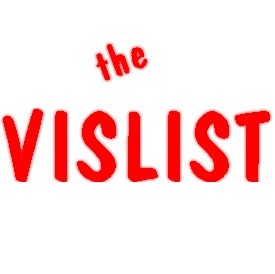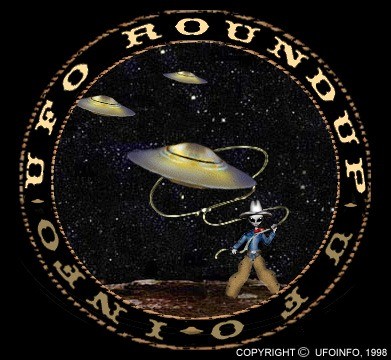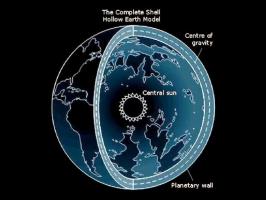Copy Link
Add to Bookmark
Report
VISION-LIST Digest Volume 10 Issue 06

VISION-LIST Digest Thu Jan 31 10:31:45 PDT 91 Volume 10 : Issue 6
- Send submissions to Vision-List@ADS.COM
- Send requests for list membership to Vision-List-Request@ADS.COM
- Access Vision List Archives via anonymous ftp to ADS.COM
Today's Topics:
Information request for analog WORM drives
An improved median filter
Displaying of depth maps
Change of Deadline for IJIVC Special Issue
CFP: Signal and Image Understanding
----------------------------------------------------------------------
Date: Wed, 30 Jan 91 16:41:57 PST
From: spock@windchime.arc.nasa.gov (Son of Sarak)
Subject: Information request for analog WORM drives
Organization: NASA Ames Research Center
Hello,
I am looking into upgrading our mobile image acquisition system. Our
current system uses a 3/4in Umatic recorder. We would like to replace
the Umatic with an analog WORM drive or its equivalent. If anyone is
using a WORM drive type of laser disk to record video information
please Email the name of the company and any objective or subjective
comments on the system including, but not restricted to:
1) Compatible video formats.
2) Still frame read?
3) Computer control?
4) Maximum recording time.
If there is sufficient interest I will summarize and post responses
to the Vision List. Thanks in advance.
Phillip Smith pnsmith@ames.arc.nasa.gov
------------------------------
Date: Tue, 29 Jan 91 22:50:01 CST
From: stanley@visual1.tamu.edu (Stanley Guan)
Subject: An improved median filter
I have come upon an interesting paper on an improved median filter.
The algorithm is simple and offers improved performance. I have a
question on the parameter T which needs to be determined in the
algorithm. The paper is:
P. K. Sinha and Q. H. Hong, "An improved median filter," IEEE
Trans. on Medical Imaging, vol. 9. no. 3, Setp. 1990.
What's the meaning of the scale (0-100) used for the threshold T in
Fig. 3 Variance-threshold curves? Does it mean that if its value is 50,
T would be set to a value such that only half of the pixels will be in
the selected subset? Does anyone know the answer? Or better yet, does
any one know one of the author's email address? The only information I
got is the authors are with the Department of Engineering, University of
Reading, UK. Your help would be highly appreciated.
Stanley Guan
stanley@visual1.tamu.edu
------------------------------
Date: Wed, 30 Jan 91 16:34:33 GMT
From: goel@eola.cs.ucf.edu (Vineet goel)
Subject: Displaying of depth maps
I have implemented several existing stereo algorithm. I have a new idea for
stereo problem. I want to compare the performance of existing algorithms and
my algorithm. I want to draw 3D model from disparity map obtained. how can i
do this using mathmatica. I used the 3D plotting method of mathmetica. but
it is not good. is there any other package, from which i can get good 3D model.
my address is goel@eola.cs.ucf.edu
------------------------------
Date: Thu, 31 Jan 91 11:43:57 -0500
From: Baba Vemuri <vemuri@scuba.cis.ufl.edu>
Subject: Change of Deadline for IJIVC Special Issue
Call for Papers
International Journal of Image and Vision Computing announces a
special issue on
Range Image Understanding
Guest Editors: Dr. J. K. Aggarwal, University of Texas, Austin, Texas, USA
and
Dr. B. C. Vemuri, Dept. of CIS, University of Florida
Gainesville, Florida, USA
******************* New Deadline *********************
For submitted papers: February 28, 1991; Publication: August 1991.
The understanding of range images is a difficult yet an important area
of research in computer vision. Advances in sensor technology for
direct 3D sensing in conjunction with progress in passive range
sensing methods, have spurred a tremendous growth of research efforts
in 3D computer vision. The advent of faster hardware in the form of
multi-processing systems has alleviated the burden of processing range
data and thus provided further impetus for research in this field of
computer vision. The problems of 3D representation, and matching in
static and dynamic real-world scenes are formidable research tasks
currently being addressed by many researchers. This special issue
will gather significant research results on 3D object representation,
matching for pose determination and object recognition in static and
dynamic environments.
Papers describing novel contributions in all aspects of range image
understanding are invited, with particular emphasis on:
Novel 3D object representation that support range image understanding
Matching for pose determination as well as object recognition
Representation and indexing of large libraries of 3D objects
Applications (eg. parts picking, cartography, navigation etc.)
Image and Vision Computing publishes fully refreed technical papers.
All submissions will be refreed by two acknowledged authorities. Authors
should consult the `Notes for Authors,' published in the journal for detailed
preparation of their manuscript (also available on request from the editors).
Four single sided double spaced copies of the manuscript should be sent by
February 28, 1991, to:
Dr. B. C. Vemuri
Dept. of Computer and Information Sciences
University of Florida
Gainesville, Florida 32611
USA
------------------------------
Date: 29 Jan 91 18:06:19 +0200
From: milanese@uni2a.unige.ch
Subject: CFP: Signal and Image Understanding
Organization: University of Geneva, Switzerland
I am posting this message for a colleague. Interested people are
asked to contact the organizer at the address listed below.
Thanks - R. Milanese
PRELIMINARY ANNOUNCEMENT AND CALL FOR PAPERS
COURSE ON INTELLIGENT SYSTEMS FOR SIGNAL AND IMAGE UNDERSTANDING
PLACE AND DATE:
Udine (Italy), International Center for Mechanical Sciences (CISM),
October 1-5, 1991;
SPONSORS:
EURASIP (European Association for Signal Processing); UNESCO;
University of Udine;
MOTIVATIONS AND SCOPE:
By 'Intelligent System' is meant a collection of modules (hardware,
software) aimed at emulating the ways humans adopt to solve problems.
It is now widely recognised that problems involving perceptive
capabilities (visual, auditory, tactile,..), and their integration in
activities such as scene understanding, speech recognition, signal and
data interpretation, senso-motorial coordination, are particularly
difficult to emulate. The course introduces the basic techniques that
are currently used in the design of intelligent systems for signal and
image understanding: terminology and concepts will be presented
concerning the knowledge-based approach, as well as the connectionist
paradigms. Attention will be devoted to various aspects of
'integration' (numerical with symbolic representations and processing
steps, data fusion from sensors) in suitable architectural and
programming schemes; case studies will be discussed, concerning
applications in signal and image domains.
The sessions of the school will contain tutorial lectures and oral
presentations. Practical software demonstrations will also take
place.
WHO SHOULD ATTEND:
University researchers and graduate students in electrical
engineering, computer science and related; practising engineers and
technical managers involved in signal and image analysis in industrial
domains. Experience in the use of computers is desirable.
Participation is limited.
MAIN TOPICS:
1.- Intelligent system architectures, with emphasis to signal
understanding and image interpretation: blackboard systems, distributed
(multi-agent) systems;
2.- Non-numerical programming techniques: functional, logical,
object-oriented; integration of numerical and symbolic programming
modules;
3.- Multi-sensor data fusion techniques (statistical; inferential);
4.- Visual modelling techniques; matching and reasoning in visual
systems;
5.- Parallel distributed systems; neural computing techniques;
an overview on signal- and image-oriented applications;
6.- Case studies.
A detailed timetable of the lectures will be sent to the participants.
INVITED LECTURERS:
Y. Demazeau, LIFIA - CNRS, Grenoble (F);
C. Liedtke, University of Hannover (D);
C. Tasso, University of Udine (I);
E. Trucco, University of Genoa (I) and Edinburgh (UK);
D. Willshaw, University of Edinburgh (UK);
PROCEEDINGS:
Will be published on a special issue of SIGNAL PROCESSING (Elsevier);
papers will be refereed.
Those participants who wish to submit a paper, are requested to send four
copies of their contribution, in its final form, to the Coordinator of the
Course by June 1, 1991.
COORDINATOR:
prof. Vito ROBERTO;
Dipartimento di Informatica,
Via Zanon, 6 UDINE (Italy)
Telefax +39 432 510755; Telephone: +39 432 297169;
E-mail: roberto@uduniv.cineca.it
FURTHER INFORMATION: contact the Coordinator by e-mail or fax.
------------------------------
End of VISION-LIST digest 10.6
************************

















